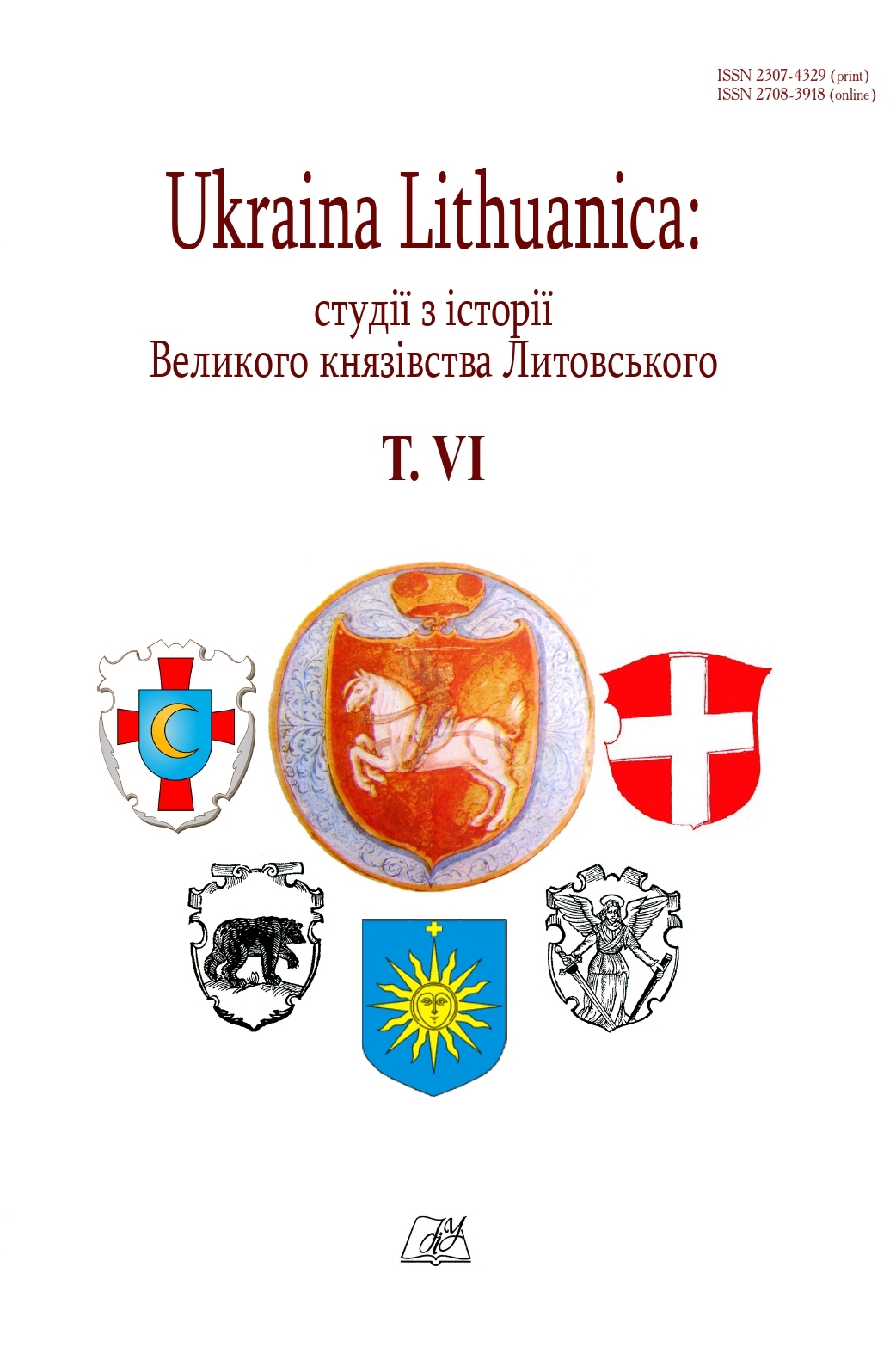
MOLDOVA'S RELATIONS WITH THE GRAND DUCHY OF LITHUANIA
IN THE SECOND HALF OF THE 14th CENTURY –
BEGINNING OF THE 15th CENTURY
(UNTIL THE TREATY OF LUBLAU IN 1412)
Valentin CONSTANTINOV
Doctor of Historical Sciences (Dr. Hab. in History), Senior Scientist,
Institute of History of Academy of Sciences of Moldova
(Republic of Moldova, Chisinau), This email address is being protected from spambots. You need JavaScript enabled to view it.
ORCID: https://orcid.org/0000-0001-9578-1134
DOI: https://doi.org/10.15407/ul2021.06.001
Abstract
In the middle and second half of the 14th century, significant territorial changes took place in Central, Eastern, and Southeastern Europe. The old political structures, which by that time had outlived their usefulness, were replaced by new ones: the revived Kingdom of Poland, the Grand Duchy of Lithuania, and the Moldavian principality. These changes took place in a fierce struggle, with confrontations on the battlefield giving way to confrontations on the diplomatic front. In addition to the above-mentioned political formations, the Hungarian king also had an important place in this struggle. Louis the Great of Anjou at one time united the Hungarian and Polish crown into his own hands, after the death of Casimir the Great Polish king who had no male offspring. The Moldovan rulers took advantage of the international political conjuncture in this space, who skillfully conducted their foreign policy based on the principle of the balance of power. First, the problem of heredity in Poland and then in the Hungarian kingdom itself undoubtedly contributed to the strengthening of a still very young state that appeared in the middle of the 14th century, first as a Hungarian march, and which was tasked with moving eastward, and then as an independent state. However, at that time, every political entity had a suzerain, which gave him the right to exist. Vasal addiction varied from case to case. In turn, when such an opportunity arose, the Moldovan rulers could change their overlords based on political interest. In this, they used the strength and power of the Lithuanian princes. At first, being in allied relations with the Koriatovichs, the Moldovan rulers strengthened their state, and then, by the will of fate, they developed friendly relations with Vitovt / Alexander and tried not to spoil relations with him, participating in those planned through the Grand Duke of Lithuania. A special test for the Kingdom of Poland and the Grand Duchy of Lithuania was the war with the Teutonic Order, which broke out in 1409. The Moldavian soldiers again took part in the Battle of Grunwald in 1410. However, the problem was that the Teutons were supported by the Hungarian king, Sigismund of Luxembourg, who wanted to return the Hungarian influence in Moldova. Thus, the Moldavian principality was drawn into the tangle of international relations in this area where the Grand Duchy of Lithuania was of great importance.
Keywords
Sigismund of Luxembourg, Kingdom of Poland, Grand Duchy of Lithuania, Moldavian principality.
References
- Codex epistolaris Saeculi decimi quinti. Т. II (1382–1445). Krakow. [in Latin].
- Codex Epistolaris Vitoldi Magni Ducis Lithuaniae 1376–1430 / colectus opera Antonii Prochaska. Kraków. [in Latin].
- Constantinov, V. (2009). Documentul original de la Alexandru cel Bun pentru episcopia de Rădăuţi (July 6, 1413). "Arhiva Moldaviae", 2009, I, 145–149. [in Moldavian].
- Documente moldoveneşti înainte de Ştefan cel Mare. Vol. II. Iaşi. [in Romanian].
- Documenta Romaniae Historica. Series A. Moldova, vol. I (1384–1448). Bucharest. [in Romanian].
- Documenta Romaniae Historica. Series D. Relaţii între Ţările române, vol. I, (1222–1456). Bucureşti: Editura Academiei Republicii Socialiste România. [in Romanian].
- Georgescu, V. (1980). Bizanţul şi instituţiile româneşti până la mijlocul secolului al XVIII-lea. Bucureşti. [in Romanian].
- Gonţa, Alexandru I. (2010). Românii şi Hoarda de Aur (1241–1502). Iaşi. [in Moldavian].
- Gorovei, Şt. S. (1997) Întemeierea Moldovei. Probleme controversate. Iaşi, Academy Publishing House. [in Moldavian].
- Kuczyński, S. (1987). Wielka wojna z Zakonem Krzyżackim w latach 1409–1411. Wyd. 5 popr. Warszawa: Wojskowy Instytut Historyczny im. Wandy Wasilewskiej. [in Polish].
- Manolescu, R. (1965). Campania lui Sigismund de Luxemburg în Moldova (1395). Analele. Universităţii Bucureşti. Istorie. Vol. XV, 65–72. [in Romanian].
- Panaitescu, P. (1996). Mircea cel Bătrân. Bucharest. [in Romanian].
- Pippidi, A. (1983). Tradiţia politică bizantină în Ţările Române. Bucureşti. [in Romanian].
- Prochaska, А. (1908). Król Władisław Jagiełło. T. I. Kraków: Akademia Umiejętności. [in Polish].
- Prochaska, A. (1914). Dzieje Witołda W. Księcia Litwy. Wilno: Nakład i druk Ks. A. Rutkowskiego. [in Polish].
- Polnoe Sobranie Russkih Letopisej: Vol. 5. Pskovskaya i Sofijskaya letopis. Sankt-Peterburg. [in Russian].
- Polnoe Sobranie Russkih Letopisej: Vol. 8. Prodolzhenie letopisi po Voskresenskomu spisku. Sankt-Peterburg. [in Russian].
- Polnoe Sobranie Russkih Letopisej: T. 32. Hroniki Litovskaya i Zhmojtskaya i Byhovca. Letopisi Barbulakovskaya, Averki i Pancyrnogo. Moskva. [in Russian].
- The Slavic-Romanian chronicles of the XV–XVI centuries / published by Ion Bogdan. Bucharest. [in Romanian].
- Stryjkowski, M. (1846). Kronika polska, litewska, zmódzka i wszystkiéj Rusi. Warsaw. [in Polish].
- Tęgowski, J. (1993). Powiązania genealogiczne wojewodów mołdawskich Bogdanowiczów z domem Giedyminowiczów w XIV–XV wieku. Genealogia, (3), 45–66.



